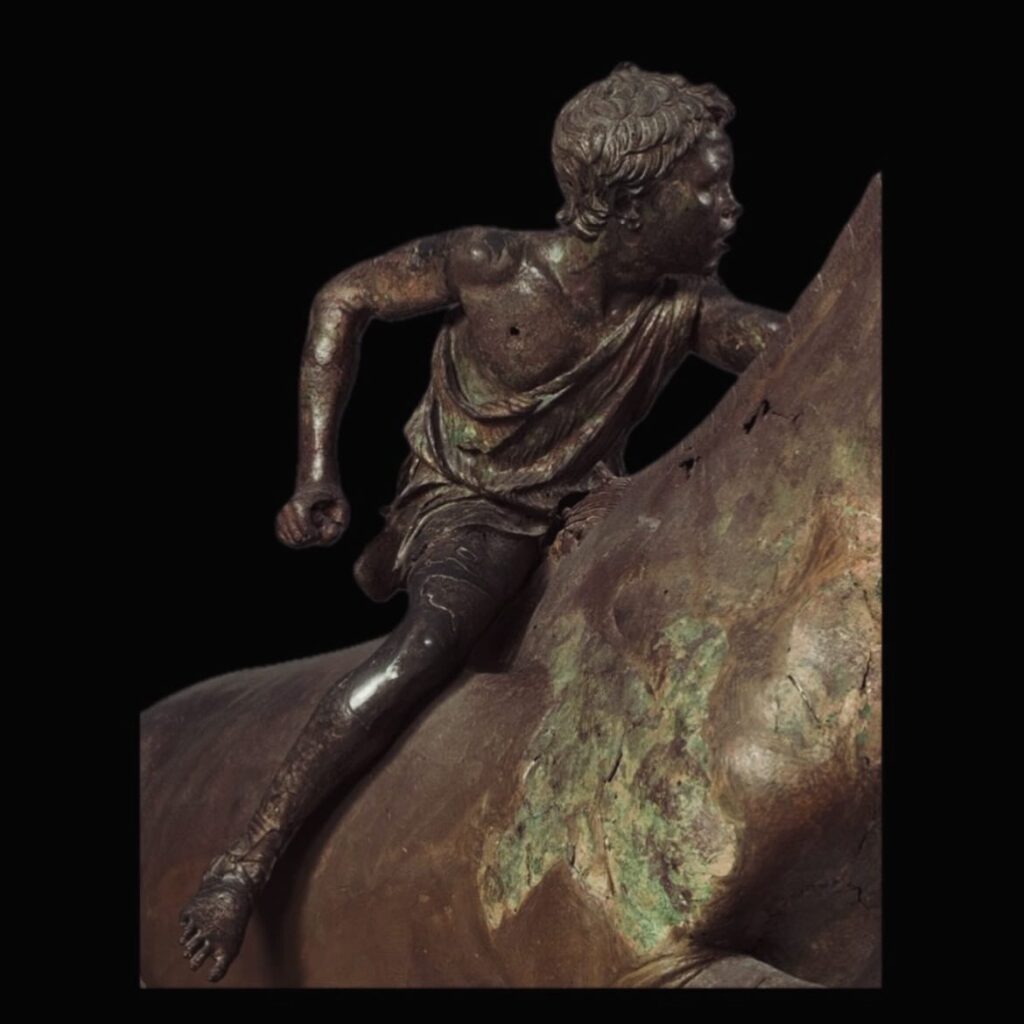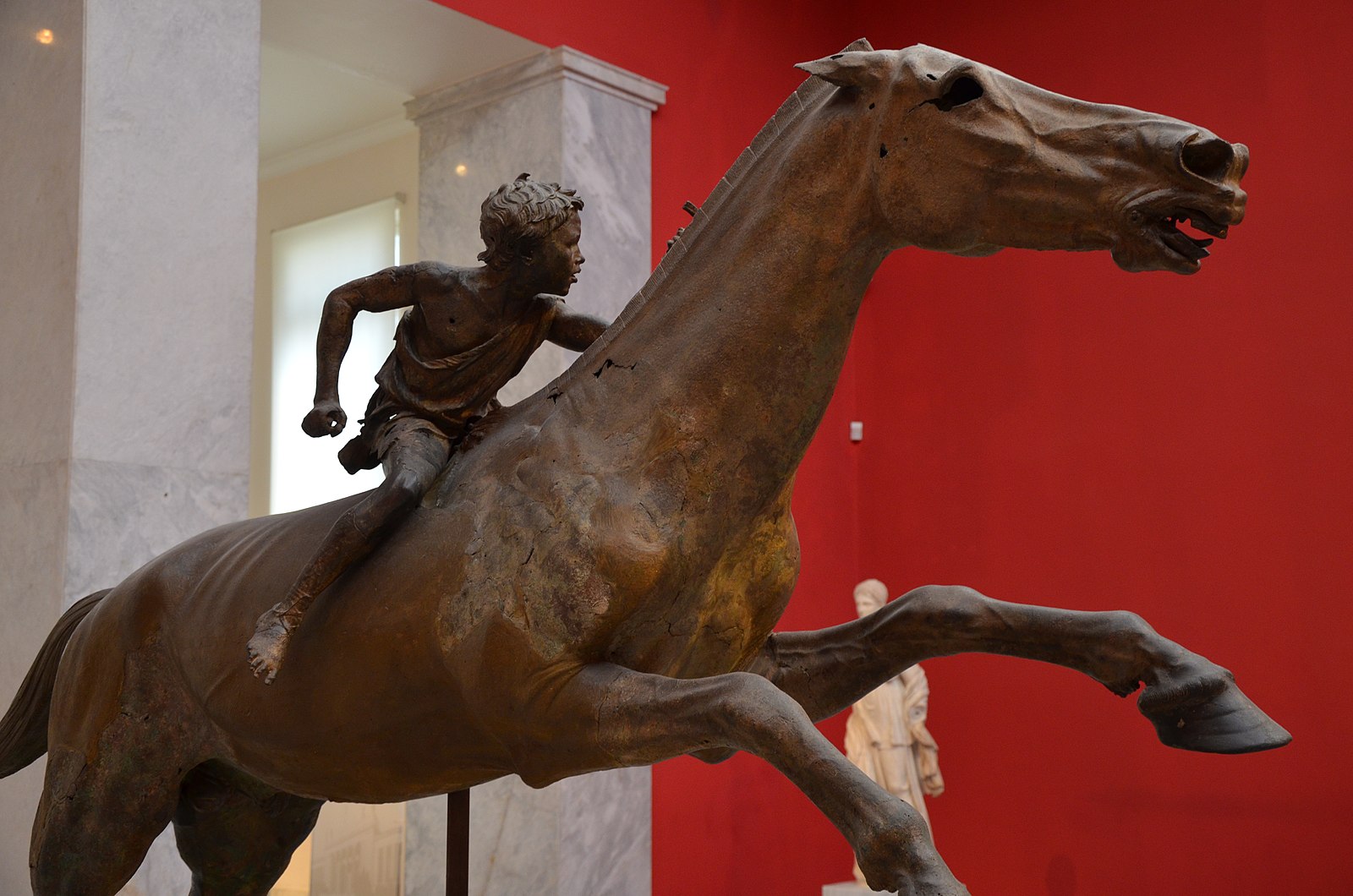When you visit the National Archaeological Museum in Athens (make it your first stop in that fine city!) you will likely encounter this impressive bronze monument – hard to miss since it is a nearly life-sized race-horse dating to the second century B.C.
Perched precariously on its withers is a young jockey exhorting his powerful steed on – precious little protecting him from heaving horseflesh and that noble animal is a marvel, all straining sinew, flaring nostrils, articulated veins, and thundering hooves galloping flat out. Analysis of the bronze indicates that the stallion likely stood in much the same way it is currently displayed, with most of the weight springing from the hind legs. Only traces of an elaborate bridle remain and just a scrap of rein is still grasped in his hand.


Horse and rider were pulled from the sea near Cape Artemision between 1928 and 1936, the currents proving perilous for ancient ships but a continued boon for archaeologists, who suspect this imposing bronze statue was erected in a Panathenaic sanctuary to celebrate a racing victory. The chariot race might have been the premier equestrian event, but the single-horse race (the κέλης) provided another opportunity for the horse-mad Greeks to compete. Scholars have suggested the young rider was a professional jockey and his skin was originally patinated black likely indicating Ethiopian descent, while the barely visible Nike on the horse’s rear thigh is the owner’s brand.
I’ve just finished Geraldine Brooks’ fantastic novel ‘Horse’ and had horse-racing on the mind – how little some things have changed, eh?




